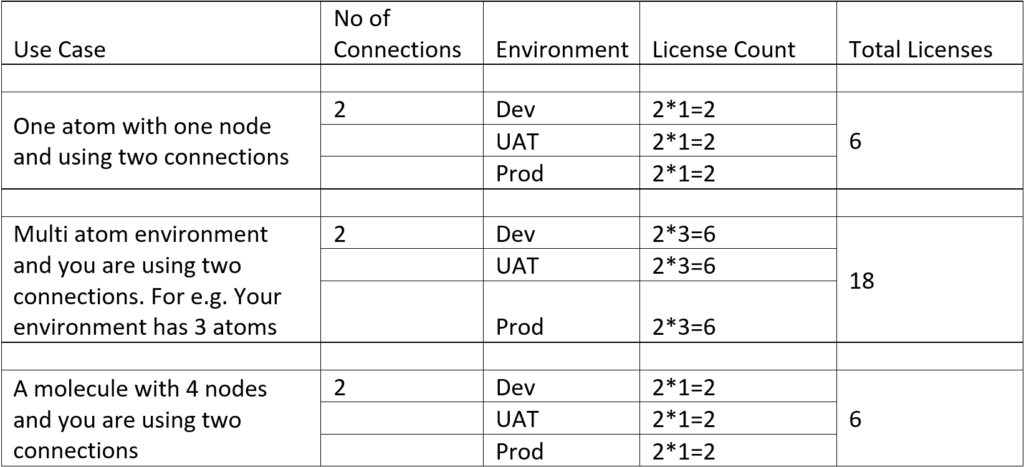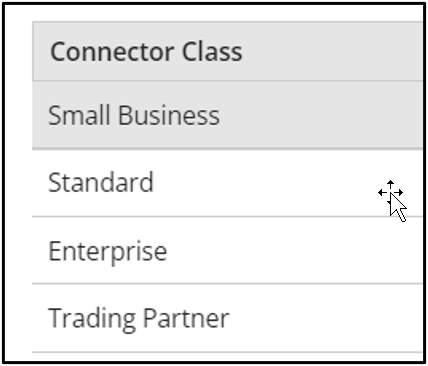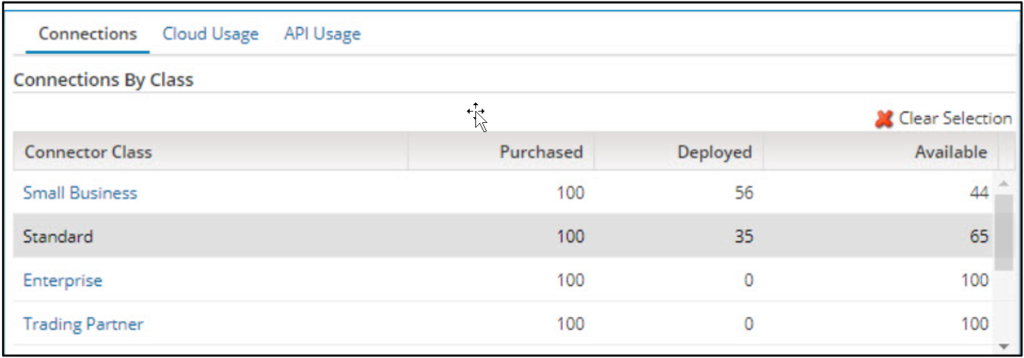How does Boomi Licensing work?
Boomi counts the number of licenses consumed based on the number of connectors multiplied by the number of runtimes it’s deployed on. For e.g. If you have two connections in your process let’s say Salesforce and NetSuite and you have deployed your process to the Dev environment and Production environment. Licenses will be counted as follows:
No of connection (2 in this case) * No of servers (2 in this case) = 4
The number of licenses doesn’t increase based on the number of processes. If you have a hundred processes but they are using two connections, it would still count as just two licenses per runtime.
Following is a list of scenarios for understanding license count:
- If the component IDs of two connections are the same, the platform considers them as the same connection. However, if the component ID is different (even though everything else is the same e.g., you made a copy of the connection), it will be considered as two separate licenses if you deploy processes with those connections.
Connector Classes:
- Connection licenses are categorized by connector classes: Small Business, Standard, Enterprise, and Trading Partner.
- Connector class wouldn’t change how the connection works it’s just counted under that specific class pool if they fall into that category.
Example:
- Small Business – QuickBooks, Sage 50/Peachtree
- Standard – Most of the connections fall under this category like SFTP, Mail, Salesforce, NetSuite, HTTP Client, etc
- Enterprise – Oracle E-Business, SAP Business
- Trading Partner – Used for B2B Transactions. One trading partner corresponds to one license. Each of the communication types inside it doesn’t count as extra
Below is a screenshot from Boomi:

Where Can we track the number of licenses?
We can find the license details in Settings > Account Information and Setup > Licensing This page shows the number of connections that your account has purchased, deployed, and available, grouped by class. Test connections have “Test” after their connector class, but the Production connection doesn’t have anything written after that. 
Best Practices:
- Use common connections instead of creating new and leverage environment extensions to connect to different servers.
- Put all connection components into a single common folder within the Build console and restrict access to this folder to administrators or super-users
- Make sure only connection needs are referenced in the to-be-deployed process.
- While developing and testing in Test Mode sometimes you need to configure connection values directly instead of using extensions. In this scenario create a separate connection and make sure you don’t deploy it. You can give this a name like “Do Not Deploy”
Cover Photo by sydney Rae on Unsplash




